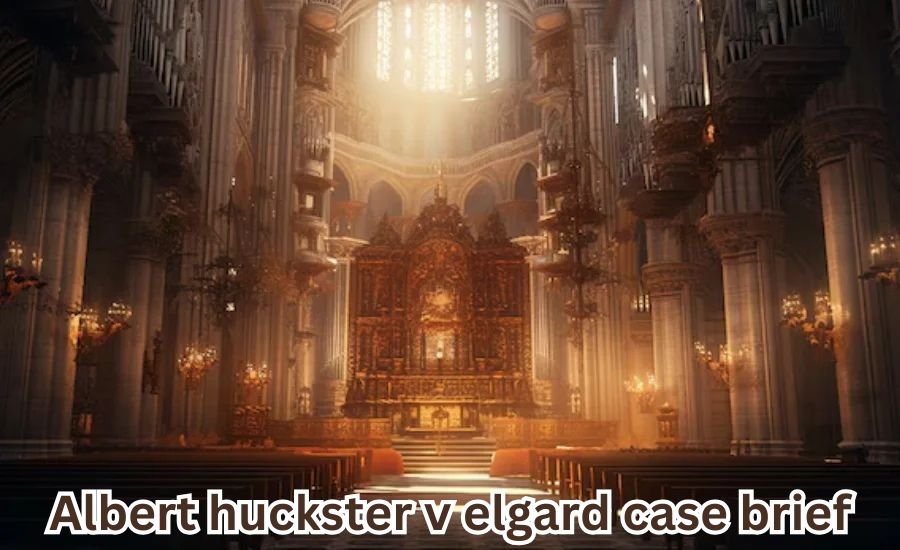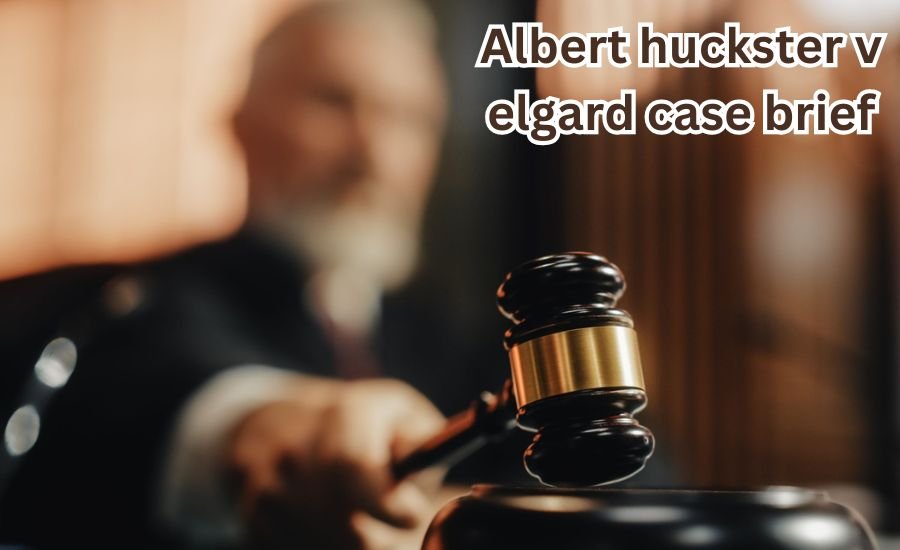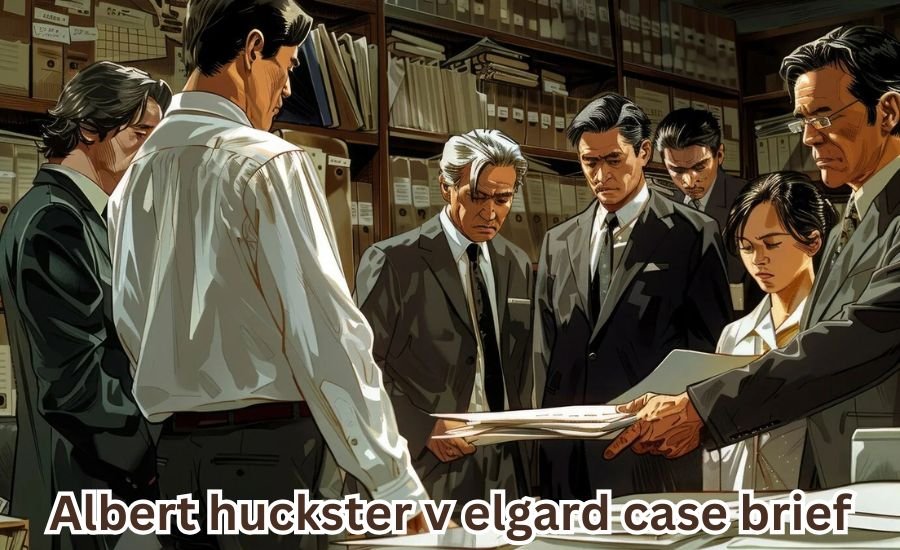The Albert Huckster v. Elgard case represents a significant moment in the world of copyright law, exploring the delicate balance between creative expression and protection against infringement. This article provides a comprehensive overview of the case, including its background, key arguments, judicial opinions, and implications for the creative industries.
Background of the Case
The legal dispute began when Albert Huckster, a renowned graphic designer, accused Elgard, a competing advertising firm, of copying his unique design concepts. Huckster had spent years developing distinctive graphical elements and innovative color schemes. He claimed that Elgard’s advertising campaign, launched shortly after his own, featured striking similarities to his designs, leading to allegations of intellectual theft.
The Players: Plaintiff vs. Defendant
In this case, Albert Huckster stood as the plaintiff, representing individual creators’ rights to protect their work. Meanwhile, Elgard acted as the defendant, arguing that their designs were not infringing upon Huckster’s copyright but rather transformed for a different market purpose. This conflict set the stage for a pivotal court ruling that would shape the future of copyright law.
Legal Issues Presented
The case law summary revolves around several critical legal issues that arose during the proceedings:
- Originality and Copyrightability: Did Huckster’s designs meet the originality threshold necessary for copyright protection?
- Infringement Assessment: Were Elgard’s designs substantially similar to Huckster’s, constituting a violation of copyright laws?
- Fair Use Defense: Could Elgard argue that their use of similar styles fell under the fair use doctrine, particularly in the context of advertising?
Judicial Opinions and Legal Analysis

The court’s analysis in Albert Huckster v. Elgard focused heavily on the comparison of the contested designs. Experts in graphic design and copyright law provided testimony to help the court understand the nuances of each design. They examined aspects such as color schemes, layout, and the combination of elements, which were crucial in establishing Huckster’s originality.
Key Arguments from Both Sides
Plaintiff’s Arguments
- Originality: Huckster emphasized that his designs were the result of extensive creativity and unique assembly of common elements, making them protectable under copyright law.
- Market Confusion: He argued that Elgard’s use of similar designs could confuse consumers, thereby harming his reputation and business.
Defendant’s Arguments
- Transformative Use: Elgard claimed that their designs were transformative and created for a different market purpose, arguing that this change justified their actions under the fair use doctrine.
- Common Elements: They also contended that many design elements are commonly used in advertising, implying that their designs were not infringing on Huckster’s work.
Court Decision Details

The trial court ruled in favor of Albert Huckster. The judge found that Huckster’s designs indeed met the originality requirement for copyright protection. In a detailed judicial opinion, the court stated that while Elgard’s designs were not exact replicas, they were sufficiently similar in overall feel to create confusion among consumers.
The Total Concept and Feel Approach
A key aspect of the ruling was the “total concept and feel” approach to copyright infringement. The court concluded that the overall aesthetic execution of Elgard’s designs closely mirrored Huckster’s, thereby infringing upon his copyright.
Case Outcome and Legal Precedents
The case outcome not only favored Huckster but also set an important legal precedent in the realm of copyright law. The court issued an injunction against Elgard, preventing them from using the infringing designs, and awarded damages to Huckster.
Implications for Future Cases
This ruling reinforced the rights of artists and creators to protect their unique works from imitation. It clarified the legal principles surrounding what constitutes infringement, particularly in industries where borrowing stylistic elements is common. As a result, the decision has been frequently cited in subsequent copyright disputes.
The Role of Expert Testimony
One of the pivotal elements in this case was the reliance on expert testimony. Experts from both graphic design and copyright law provided detailed analyses that helped the court understand the complexities of design elements. Their insights underscored how subtle differences in design could lead to significant copyright infringement.
May Also You Like: Jason-rappaport-state-bar
Public Reaction and Media Coverage
The Albert Huckster v. Elgard case attracted considerable public attention, with various media outlets covering the trial extensively. The case highlighted societal concerns about copyright issues in the digital and advertising realms. Public discourse around the trial emphasized the need for protecting intellectual property in a rapidly evolving digital landscape.
Future Predictions: The Ripple Effect in Copyright Law
Legal analysts predict that the ruling in Albert Huckster v. Elgard will have a lasting impact on copyright law, particularly in creative industries. The case has already become a benchmark for assessing artistic originality and infringement. Legal experts suggest that future disputes may undergo more stringent scrutiny, prompting a rise in copyright litigation as creators seek to safeguard their work more aggressively.
Educational Impact and Legal Precedents
In law schools, the Albert Huckster v. Elgard case serves as a crucial teaching tool in intellectual property coursework. It provides students with a real-world example of how legal principles apply in complex copyright cases. Additionally, this case sets precedents that influence current legal practices, emphasizing that intellectual property laws evolve alongside new creative methods and technologies.
Industry Standards and Ethical Considerations
The court of appeal decision in this case has led to a reevaluation of industry standards and ethical considerations within graphic design and advertising. Companies are now more cautious about drawing inspiration from existing works, often implementing stricter internal guidelines to ensure compliance with copyright laws. This shift not only protects original creators but also encourages a culture of innovation and respect within creative industries.
Conclusion
In summary, the Albert Huckster v. Elgard case highlights the essential balance between inspiration and imitation within the realm of copyright law. It emphasizes the need for robust protections for creative works while providing clarity on what constitutes infringement. As industries continue to evolve, the principles established in this case will undoubtedly influence the landscape of artistic expression and intellectual property rights for years to come.
Stay informed with the latest news and updates on viralzee.com


